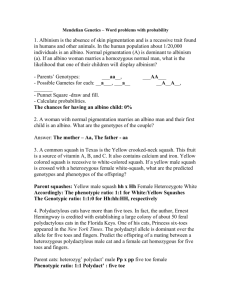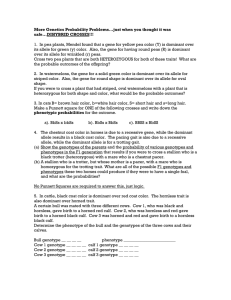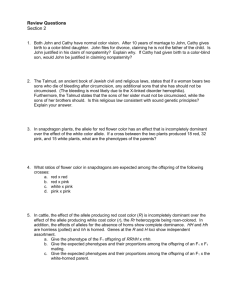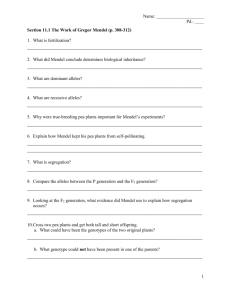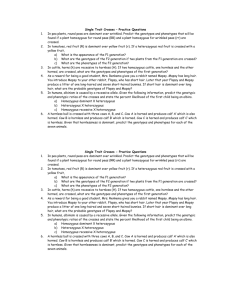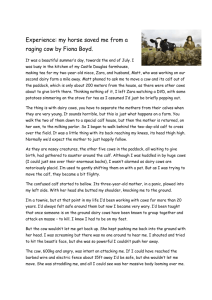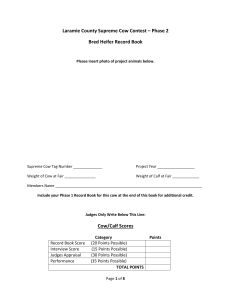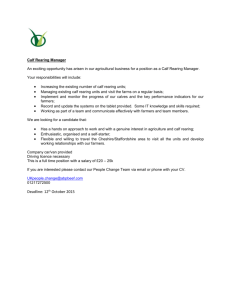Biology I – Genetics Problems – Part III
advertisement
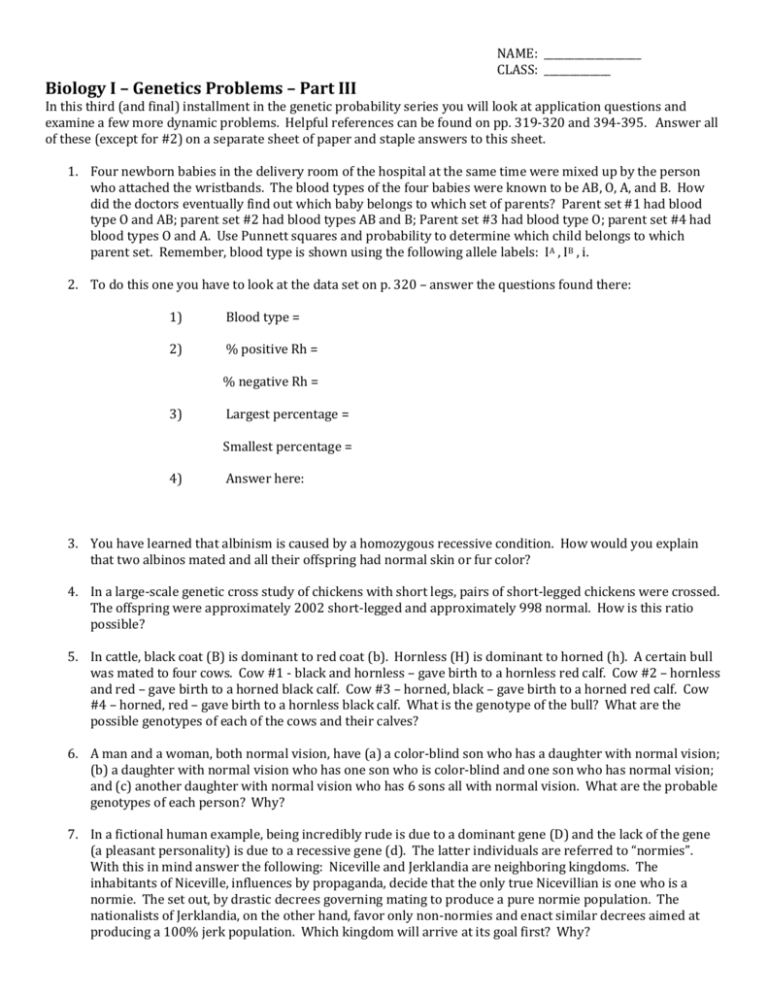
Biology I – Genetics Problems – Part III NAME: ___________________ CLASS: _____________ In this third (and final) installment in the genetic probability series you will look at application questions and examine a few more dynamic problems. Helpful references can be found on pp. 319-320 and 394-395. Answer all of these (except for #2) on a separate sheet of paper and staple answers to this sheet. 1. Four newborn babies in the delivery room of the hospital at the same time were mixed up by the person who attached the wristbands. The blood types of the four babies were known to be AB, O, A, and B. How did the doctors eventually find out which baby belongs to which set of parents? Parent set #1 had blood type O and AB; parent set #2 had blood types AB and B; Parent set #3 had blood type O; parent set #4 had blood types O and A. Use Punnett squares and probability to determine which child belongs to which parent set. Remember, blood type is shown using the following allele labels: IA , IB , i. 2. To do this one you have to look at the data set on p. 320 – answer the questions found there: 1) Blood type = 2) % positive Rh = % negative Rh = 3) Largest percentage = Smallest percentage = 4) Answer here: 3. You have learned that albinism is caused by a homozygous recessive condition. How would you explain that two albinos mated and all their offspring had normal skin or fur color? 4. In a large-scale genetic cross study of chickens with short legs, pairs of short-legged chickens were crossed. The offspring were approximately 2002 short-legged and approximately 998 normal. How is this ratio possible? 5. In cattle, black coat (B) is dominant to red coat (b). Hornless (H) is dominant to horned (h). A certain bull was mated to four cows. Cow #1 - black and hornless – gave birth to a hornless red calf. Cow #2 – hornless and red – gave birth to a horned black calf. Cow #3 – horned, black – gave birth to a horned red calf. Cow #4 – horned, red – gave birth to a hornless black calf. What is the genotype of the bull? What are the possible genotypes of each of the cows and their calves? 6. A man and a woman, both normal vision, have (a) a color-blind son who has a daughter with normal vision; (b) a daughter with normal vision who has one son who is color-blind and one son who has normal vision; and (c) another daughter with normal vision who has 6 sons all with normal vision. What are the probable genotypes of each person? Why? 7. In a fictional human example, being incredibly rude is due to a dominant gene (D) and the lack of the gene (a pleasant personality) is due to a recessive gene (d). The latter individuals are referred to “normies”. With this in mind answer the following: Niceville and Jerklandia are neighboring kingdoms. The inhabitants of Niceville, influences by propaganda, decide that the only true Nicevillian is one who is a normie. The set out, by drastic decrees governing mating to produce a pure normie population. The nationalists of Jerklandia, on the other hand, favor only non-normies and enact similar decrees aimed at producing a 100% jerk population. Which kingdom will arrive at its goal first? Why?
